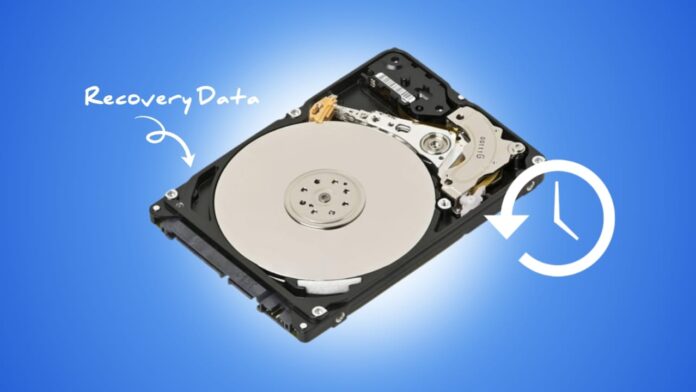
Hard drives store important files, documents, and memories. But sometimes they stop working suddenly without any warning.
When this happens, you may lose your data. Here, I will explain how to recover lost data from your hard drive. Follow these simple steps to get your files back easily.
also read: How to Secure Your Sensitive Data from Your Lost Android Phone
Why You Need to Recover Lost Data from Your Hard Drive
Many people do not back up their files regularly. A failed hard drive can cause major problems. You can lose your family photos, school work, or job files.
But do not panic if your hard drive stops working. In many cases, data recovery is still possible and easy.
Understand How a Hard Drive Works
A hard drive has moving parts inside the case. It has spinning platters that hold magnetic data. The read/write head moves across the platter surface. A motor spins the platters very fast while reading.
A logic board controls data transfer between disk and computer. If any part fails, the drive may stop working.
Know the Types of Hard Drive Failures
There are five main reasons a hard drive fails.
- Physical damage: The drive was dropped or hit hard.
- Logical failure: Data gets corrupted or deleted accidentally.
- Electrical failure: The circuit board may burn or fail.
- Software issue: The operating system may crash or hang.
- Firmware error: Built-in drive software becomes broken or outdated.
You must know the failure type before starting recovery.
Check for Symptoms of Drive Failure
Some hard drives make strange clicking sounds. Others don’t show up on the screen. The computer may take time to boot. You may see missing files or corrupted folders. Stop using the drive if you see these symptoms.
Steps to Recover Lost Data from Your Hard Drive Safely
When your drive fails, take action quickly and carefully. Follow these steps to avoid losing files permanently.
Step 1: Check if the Drive Is Detected
Open BIOS or Disk Management on your computer. Check if the drive name appears there. Listen for clicking, grinding, or no spinning sounds. Try another cable or USB-to-SATA adapter. Connect it to another working computer if possible.
Step 2: Create a Backup Before Recovery
If the drive works, copy your data now. Use software like NinjaOne or EaseUS Backup Tool. Save files to another drive or computer. Never copy files to the same broken drive.
Step 3: Use Data Recovery Software for Missing Files
If your files are lost but the drive is visible, use software. Run recovery programs to scan and restore files.
Best recovery software tools:
- Recuva: Good for beginners, simple and effective.
- EaseUS: Recovers deleted files and lost partitions.
- PhotoRec: Free and works on all systems.
- Stellar: Works on Windows and Mac systems.
- DiskDrill: Recovers files from formatted or deleted disks.
- TestDisk: Repairs partitions and recovers boot records.
Run deep scan mode for better results. Save recovered files on a different device.
Step 4: Try Built-in Tools on Your System
Some operating systems have tools to fix disk issues.
- On Windows: Open Command Prompt and type chkdsk /f X: (X is your drive letter). This fixes basic errors on the hard disk.
- On Mac: Open Disk Utility and use “First Aid.” It checks and repairs file system errors.
Use these only if your drive is detected.
Step 5: Get Professional Help for Physical Damage
If your drive makes noise or is not detected, stop now. Physical damage needs expert tools and clean rooms. Do not try to open or fix it yourself. Call professional recovery services to rescue your files safely.
Step 6: Freeze the Drive (Last Option Only)
Freezing may help in some very rare cases. Place the hard drive in a zip bag. Keep it in the freezer for 4–6 hours. Then connect it and try accessing files quickly. This method may work on mechanical drives. Never use this trick on SSD drives.
Best Tools and Tips
Using good tools and smart methods improves recovery chances. Always follow best practices for successful data recovery.
Choose Between Open-Source and Paid Software
Open-source tools are free and flexible. Examples: TestDisk, PhotoRec, and FreeRecover. They work well for simple recovery tasks.
Commercial software is easy to use and has more features. Examples: EaseUS, Stellar, DiskDrill, and Recuva. These are best for people with less technical knowledge.
Use open-source tools if you know basic commands. Use commercial tools if you want quick results.
How to Get Back Deleted Files
Sometimes, files are deleted by mistake. Stop using the hard drive immediately. Deleted files stay on disk until overwritten.
Follow these steps to recover deleted files:
- Check the Recycle Bin or Trash folder.
- Use File History (Windows) or Time Machine (Mac).
- Run recovery software like Recuva or DiskDrill.
- Save recovered files on another drive.
- If files still don’t appear, contact professionals.
Act fast before the files are gone forever.
Backup Deleted Files from Hard Drive
Once files are recovered, take a full backup. Use cloud storage, USB drives, or external hard disks. Keep two copies in different places always. Use backup software to schedule daily or weekly backups.
Options for backup:
- Cloud storage like Google Drive or OneDrive.
- External hard disks or pen drives.
- Create system restore points in Windows.
- Use Time Machine for automatic Mac backups.
Backups prevent panic in future file loss situations.
Fix Data Corruption or File Errors
Sometimes files show errors when you open them. Or the computer crashes again and again. These are signs of data corruption.
Solutions for corrupted files:
- Update your disk drivers and firmware.
- Use chkdsk or Disk Utility tools.
- Use TestDisk or PhotoRec to fix structures.
- Run “First Aid” tool on Mac Disk Utility.
- Clone the disk and recover files safely.
Check your files and software after every update.
The Bottom Corner
You can recover lost data from your hard drive easily. First, understand what caused the failure.
Then use safe methods to get your data back. Use software, tools, or expert help as needed. Always make backups to avoid future file loss problems.







